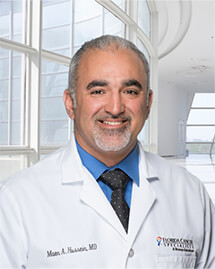Author(s): Mariano Provencio, M.D., Ph.D., Ernest Nadal, M.D., Ph.D., José L. González-Larriba, M.D., Ph.D., Alex Martínez-Martí, M.D., Reyes Bernabé, M.D., Joaquim Bosch-Barrera, M.D., Joaquín Casal-Rubio, M.D., Virginia Calvo, M.D., Ph.D., Amelia Insa, M.D., Santiago Ponce, M.D., Ph.D., Noemí Reguart, M.D., Ph.D., Javier de Castro, M.D., Ph.D., Joaquín Mosquera, M.D., Ph.D., Manuel Cobo, M.D., Ph.D., Andrés Aguilar, M.D., Guillermo López Vivanco, M.D., Carlos Camps, M.D., Ph.D., Rafael López-Castro, M.D., Teresa Morán, M.D., Isidoro Barneto, M.D., Delvys Rodríguez-Abreu, M.D., Ph.D., Roberto Serna-Blasco, M.Sc., Raquel Benítez, Ph.D., Carlos Aguado de la Rosa, M.D., Ramón Palmero, M.D., Florentino Hernando-Trancho, M.D., Ph.D., Javier Martín-López, M.D., Alberto Cruz-Bermúdez, Ph.D., Bartomeu Massuti, M.D., and Atocha Romero, Pharm.D., Ph.D.
Author Affiliations
From Hospital Universitario Puerta de Hierro–Majadahonda (M.P., V.C., R.S.-B., J.M.-L., A.C.-B., A.R.), Hospital Universitario Clínico San Carlos (J.L.G.-L., C.A.R., F.H.-T.), Hospital Universitario 12 de Octubre (S.P.), Hospital Universitario La Paz (J.C.), and the Genetic and Molecular Epidemiology Group, Spanish National Cancer Research Center (R. Benítez), Madrid, Institut Català d’Oncologia, L’Hospitalet de Llobregat (E.N., R.P.), Vall d’Hebron Institute of Oncology, Hospital Universitari Vall d’Hebrón (A.M.-M.), the Medical Oncology Department Hospital Clinic and Translational Genomics and Targeted Therapies in Solid Tumors, Institut de Investigacions Biomèdiques (N.R.), and Instituto Oncológico Dr. Rosell, Dexeus University Hospital (A.A.), Barcelona, Hospital Universitario Virgen del Rocio, Seville (R. Bernabé), Institut Català d’Oncologia, Hospital Universitari Dr. Josep Trueta, Girona (J.B.-B.), Complejo Hospitalario Universitario de Vigo, Pontevedra (J.C.-R.), Fundación Instituto de Investigación Sanitaria, Hospital Clínico Universitario de Valencia (A.I.), and Hospital General Universitario de Valencia, Universidad de Valencia and Centro de Investigación Biomédica en Red Cáncer (C.C.), Valencia, Complejo Hospitalario Universitario A Coruña, A Coruña (J.M.), the Medical Oncology Intercenter Unit, Regional and Virgen de la Victoria University Hospitals, Instituto de Investigación Biomédica de Málaga, Málaga (M.C.), Hospital Universitario Cruces, Barakaldo (G.L.V.), Hospital Clínico Universitario de Valladolid, Valladolid (R.L.-C.), the Medical Oncology Department, Catalan Institute of Oncology, Badalona–Germans Trias i Pujol Hospital, Badalona Applied Research Group in Oncology, Fundació Institut de Investigado de Ciences de la Salut Germans Trias i Pujol, Department of Medicine, Universitat Autònoma de Barcelona, Campus Can Ruti, Badalona (T.M.), Hospital Universitario Reina Sofia, Córdoba (I.B.), Complejo Hospitalario Universitario Insular–Materno Infantil de Gran Canaria, Universidad de Las Palmas de Gran Canaria, Las Palmas de Gran Canaria (D.R.-A.), and Hospital Universitario Dr. Balmis Alicante, Instituto de Investigación Sanitaria y Biomédica de Alicante, Alicante (B.M.) — all in Spain.
